When I learned that Kansas City International (MCI) would become the location of a mass airplane storage site, I ignored it. COVID-19 has brought unprecedented and rapid change upon us all. And we are all coping with it differently. For me, rather than accept the fact that my passion has ground to a halt, I have done my best to ignore the bad news while focusing internally on my family and friends.
But history is in the making and after a few weeks of airplane stockpiling I had to go see. I don’t know what I expected. I was excited to visit the airport for the first time in months. But when we drove past the threshold of runway 19L the site was… heartbreaking. Words truly cannot describe the feeling of seeing over a hundred planes in “active storage” lining a once busy runway and taxiway at an airport that has seen consistent and impressive growth over the past few years.
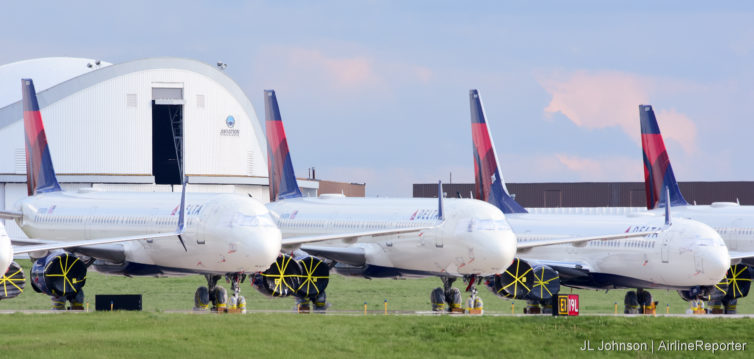
Parked Plane Stats:
I called my good friend Nick Benson, chief AvGeek over at JetTip to see just how many planes have been parked at Kansas City International since the pandemic took hold.
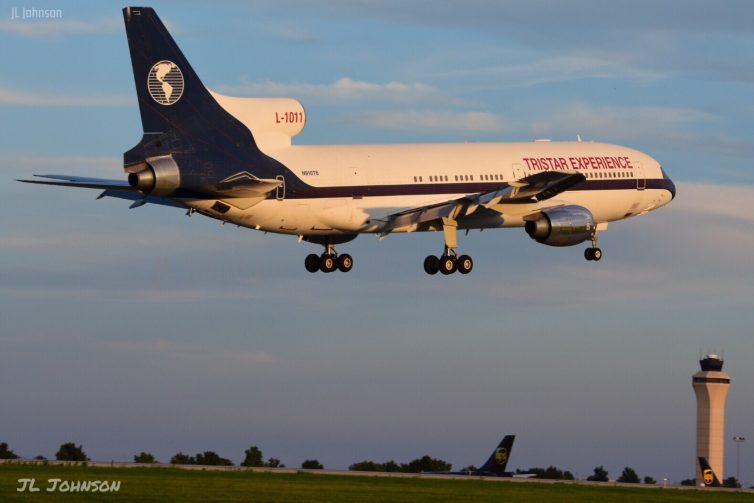
Lockheed L-1011 TriStar does a fly-by of Kansas City International Airport. – Photo: JL Johnson. Not for use elsewhere.
The Lockheed L-1011 TriStar was a plane with a tragically short lifespan. It was expected to be a real contender against the Boeing 747, Douglas DC-10, and Airbus A300. It entered the market late, in large part due to delays resulting from difficulty at Rolls-Royce, the only engine producer for the TriStar. Despite this, it is one of just a few airliners that elicits strong emotion from people of all ages and walks of life. It was received with much fanfare.
In business, however, fanfare does not necessarily equate to economic viability. In roughly two decades, just 250 units were produced – including an incredible number of custom variants. Few operators held onto their L-1011s for long before passing them along to others or sending them to storage. By most accounts, the TriStar was a failure. During development of the only TriStar engine option, the RB211, Rolls-Royce was deemed what modern day observers would call “too big to fail.” It was nationalized to avoid catastrophic economic impact to the United Kingdom and to keep the costly program afloat. Following the cancellation of the series, Lockheed fully withdrew from the commercial airliner market to focus on military and other industries.
But struggles in development, lackluster sales, and frequent turnover did not get in the way of the passion shared by those who had in some way experienced the TriStar. It was and is one of the most beloved planes in AvGeek culture. The TriStar was an underdog. People love an underdog story, and that is just what this is.
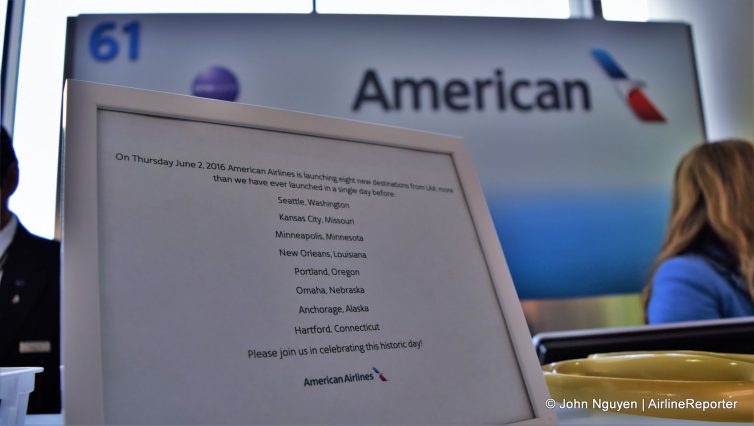
Big network expansion out of LAX for American, with eight new destinations all starting June 2
On June 2, American commenced a major expansion of its route network, with 21 new nonstop routes this month. This includes 10 new destinations just from Los Angeles International Airport (LAX), marking the largest expansion ever at LAX.
Thursday saw the largest number of inaugural flights, with eight ribbon-cutting ceremonies in Los Angeles that day, something the carrier had never done before in its history. I was invited to be part of the festivities and join the entourage, which included Jim Moses, the Managing Director (MD) for American at LAX. What does a day full of ribbon cutting ceremonies look like, you ask…?
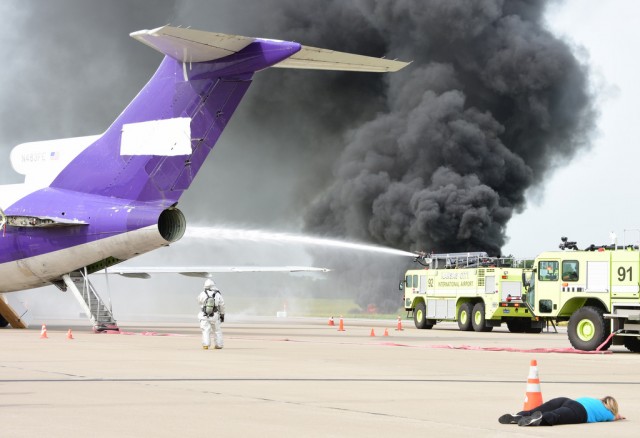
Full-scale disaster drill at Kansas City International, in full swing – Photo: JL Johnson | AirlineReporter
Practice makes perfect. And in the realm of aviation safety drills, it also creates incredible experiences for willing volunteers. Kansas City International Airport (MCI, or KCI as it’s referred to by the locals) recently hosted their triennial emergency exercise, and I was fortunate enough to score a role as a victim. I was told this was a full-scale drill from the beginning, but wasn’t sure exactly what to expect.
The closest I’ve ever been to anything remotely resembling an emergency was on my very first Airbus A320 flight just a few years ago from Minneapolis (MSP) to Pittsburgh (PIT). It was late, and after a typical approach the engines roared and we were on steep climb. Upon leveling off, the Delta captain came on to tell us we had briefly “lost steering.” After a missed approach and a fly-by, we landed uneventfully, were greeted by an ARFF (aircraft rescue and firefighting) escort, and towed to the gate. This experience, plus participating in some rudimentary safety training with Delta during last year’s #InsideDelta event, formed the foundation for my expectations.
I would soon learn I had no idea how disasters really play out, especially on the ground’¦
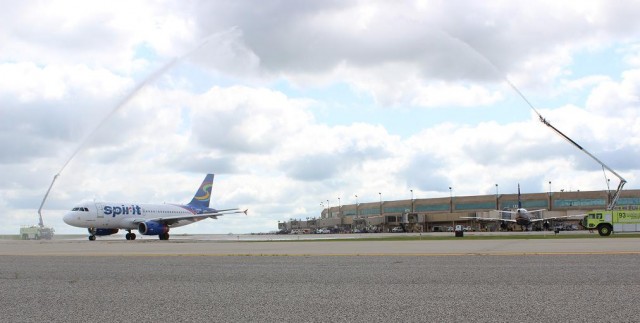
Spirit’s first flight out of Kansas City receives a dual water cannon salute – Photo: Aaron Wright, KC Aviation Dept.
It’s true, people vehemently despise Spirit Airlines. Just the mention of the company elicits emotion-filled horror stories. Indeed they have a solid 1 out of 5 star rating on TripAdvisor, and they are frequently found at, or near, the top of various “worst airline” rankings. In direct contrast to these ratings and frequent “I’ll never fly Spirit again” claims, the airline continues to grow and increase market share. This begs the question – is the experience really THAT bad? Or, is there something else at play here?
BONUS: The Five Stages of Flying an Ultra Low Cost Carrier (Epic Comic Style)
In their own defense, Spirit argues that the mass dissatisfaction with them is in large part due to consumers not understanding their progressive, totally unbundled Ultra Low Cost Carrier (ULCC) business model. That assertion seems to hold water. The vast majority of complaints I hear and see are indeed related to “unexpected fees” and being “nickel and dimed” to death. As the well-known cliche goes: “The first step to recovery is admitting you have a problem.” Thankfully, Spirit recognizes there is a problem. To that end they recently hired Barkley, a KC-based marketing firm to assist with better educating consumers and promoting what they refer to as a “bare fare.”

“Bare Fare” crop circle spotted in a soy field just north of the KC airport – Photo: Victor Lazo
A few months ago, Kansas City International airport announced that ours would be a new market served by Spirit. Shortly after an unexplained crop circle appeared prompting a lot of curiosity. It turned out the image seen above is the logo for Spirit’s Bare Fare.
I was excited to finally have the opportunity to give them a shot, contrary to the advice of everyone who I’d informed of my intentions. I booked a seat on the first flight out, and this is my honest, unbiased review…





